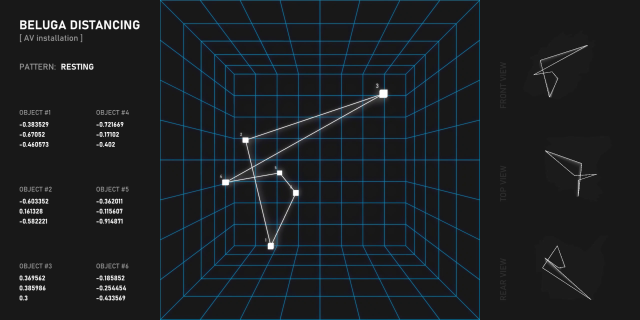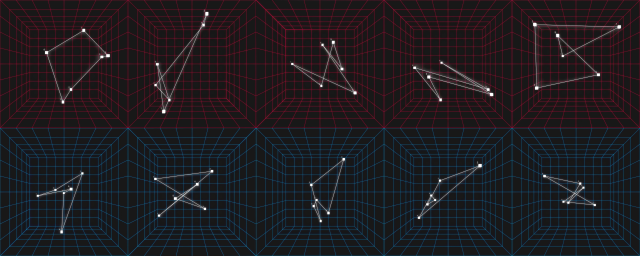Beluga Distancing
- Date
- October 2020
- Website
- https://www.vladkononkov.com/beluga-distancing
Neural technologies make it possible to transfer the audial characteristics of a biological agent to a non-biological one. The patterns of movement of belugas in captivity are amenable to analysis and subsequent reproduction using machine learning technologies, predicting the further behaviour of species and their interaction (movement, behaviour in groups, auditory communication).
Hundreds of belugas are captured annually, removed from nature and sold for shows in aquariums or for research. Replacing their natural environment with an artificial one is directly reflected in their patterns.
By training algorithms on the audial and kinematic behaviour of belugas, we have created a system that allows us to study their interaction and movement with no harm to animals.
The conditions of the 2020 pandemic placed humanity in the same conditions as belugas in captivity, physically isolating individuals from the rest of the world, which also naturally changed their patterns.
This makes it possible to transfer the characteristics of biological agents that have fallen into changed conditions to non-biological agents, building a closed system for their interaction and further research. In the process of transmission, part of the data or internal principles is interpreted incorrectly or recreated with interference, and certain features of movement or audial communication may be only a presumption of algorithms. However, the kinematic and audial characteristics of biological and nonbiological agents become similar, posing us with a question about the features of interspecific communication of biological and non-biological agents.
CREDITS
Project by Vlad Kononkov
Made in Far Eastern Federal University, –Da. Master Program in Digital Art. School of Digital Economics.




